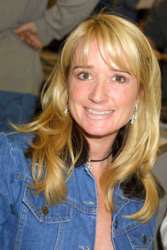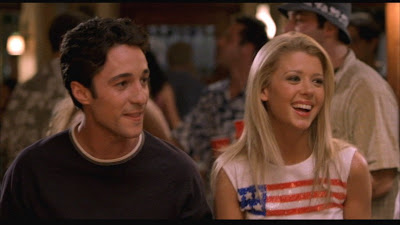i edited a pic for a friend at flixya.com
i wanna share it with you and i need what you think about it
i like this video for jersey boys
Alfred Russel Wallace was a British natural scientist, explorer, geographer, and anthropologist. He did extensive fieldwork, first in the Amazon River basin and then in the Malay Archipelago, where he identified the Wallace Line dividing the fauna of Australia from that of Asia. He is best known for independently proposing a theory of natural selection, which prompted Charles Darwin to publish his own theory. Wallace is considered co-discoverer of the theory.
Wallace was the eighth of nine children, born on January 8, 1823 at Usk, Monmouthshire. He was educated at Hertford Grammar School and left at the age of 14. In 1844 Wallace became a schoolmaster at the Collegiate School in Leicester, where he met the naturalist Henry Walter Bates. Wallace convinced Bates to join him on an expedition to the Amazon to collect specimens.
Before leaving for the Amazon, Wallace gave himself an intensive crash course in flora and fauna, making local collecting trips and haunting the British museum. For Bates and Wallace, who sailed in 1848, the jungle was their university, as well as a source of income. Growing interest in natural history was creating a dynamic market in reports and samples from the field. A practice that today would be considered biopiracy was then common and the only sustenance available to fund poor scientist doing field research across the world.
Wallace and Bates signed on with an agent, Samuel Stevens, who taught them taxidermy and species preservation, planned their itinerary to accord with the needs of collectors, sent them bottles and cash when they ran out, and advertised their findings in specialized journals, selling their specimens to institutions like the British Museum and Kew Gardens, as well as to wealthy amateurs.
The two naturalists spent their first year collecting near Belem do Para, then explored inland separately, occasionally meeting to discuss their findings. Another young explorer, botanist Richard Spruce, along with Wallace’s younger brother Herbert, briefly joined them. Wallace charted the Rio Negro for four years, collecting specimens and making notes on the people and languages he encountered as well as the geography, flora and fauna.
Wallace noted that range boundaries for a number of animal species in the Amazonian rain forest seemed to coincide with the region’s many rivers. That observation marked the origin of one of the foremost theories for why the Amazon harbors such extraordinary biodiversity for its size. This “riverine border hypothesis” in its modern form posits that the Amazon’s main rivers functioned as natural barricades to gene flow between populations.
In his publication titled Tropical Nature and Other Essays, Wallace notes that,
Warning colours ... are exceedingly interesting, because the object and effect of these is, not to conceal the object, but to make it conspicuous. To these creatures it is useful to be seen and recognized; the reason being that they have a means of defence which, if known, will prevent their enemies from attacking them, though it is generally not sufficient to save their lives if they are actually attacked.
By early 1852 Wallace was in ill health and in no condition to go any further. During his travels back downriver, his canoemen plotted to kill him and take over his belongings. Since he had been in the Amazon for so long, he had learned Portuguese and could overhear their plot at night, from which he escaped by “convincing” his men at gunpoint to paddle back to Barra do Rio Negro.
He decided to quit South America, and began the long trip back down the Amazon river to Para. To Wallace’s dismay, he found that not only had his brother Herbert died of yellow fever, but most of the collections from the previous two years that he had been forwarding down the Amazon had been delayed at the dock at Barra do Rio Negro because of a mix-up, he would therefore have to secure passage for these as well as himself.
He soon set out for England, but unfortunately, the brig on which he was traveling caught fire and sank, taking almost all of his possessions – including some live animals, along with it. For ten days Wallace and his comrades struggled to survive in a pair of badly leaking lifeboats, then were sighted and picked up by a passing cargo ship also making its way back to England.
He was distraught after arriving in England with none of his notes and collections of six years of hard labor within the forest, but he was able to recover parts of his work from memory or from collections previously sent. He lived on the insurance settlement for his collection for eighteen months, during which he vacationed in Switzerland, attended professional meetings and delivered papers, and produced two books, Palm Trees of the Amazon and their Uses, and A Narrative of Travels on the Amazon and Rio Negro. He also wrote six academic papers, which included Monkeys of the Amazon.
Wallace published several other books, including:
Darwinism
Miracles and Modern Spiritualism
My Life: A Record of Events and Opinions
The Evidence of Literary and Professional Men to the Facts of Modern Spiritualism
The Moral Teachings of Spiritualism
The Old Force, Animal Magnetism and Clairvoyance
In an article titled The Dawn of a Great Discovery, Wallace speaks of how, after his return from the Amazon he was, in 1854, preparing for his visit to the Malay Archipelago for a study of insects and birds of that region, when one day, he was introduced to Darwin in the insect room of the British Museum, and had a few minutes conversation with him.
Hearing that Darwin was interested in his travels and collections, Wallace wrote to him afterwards and received a very long letter in reply, telling him that he agreed with almost every word of his article. The two men agreed on the subject of evolution, and Wallace’s article prompted Darwin to publish his own theory on “The Origin of the Species.”
Wallace married Annie Mitten in 1866, after being introduced to her by Richard Spruce, who was a good friend of Miss Mitten’s father, William Mitten, an expert in mosses. The Wallaces had three children, Herbert, who died in childhood, Violet and William. On November 7, 1913 Wallace died at home in a country house he called Old Orchard. He was 90 years old.
Secretário Estadual de Planejamento e Desenvolvimento Econômico, Amazonas, Brasil / Secretary for Planning and Economic Development, State of Amazonas, Brazil
Article Source: http://www.articlesbase.com/nature-articles/alfred-russel-wallace-a-great-scientist-and-explorers-amazon-voyage-584810.html



.jpg)





















































